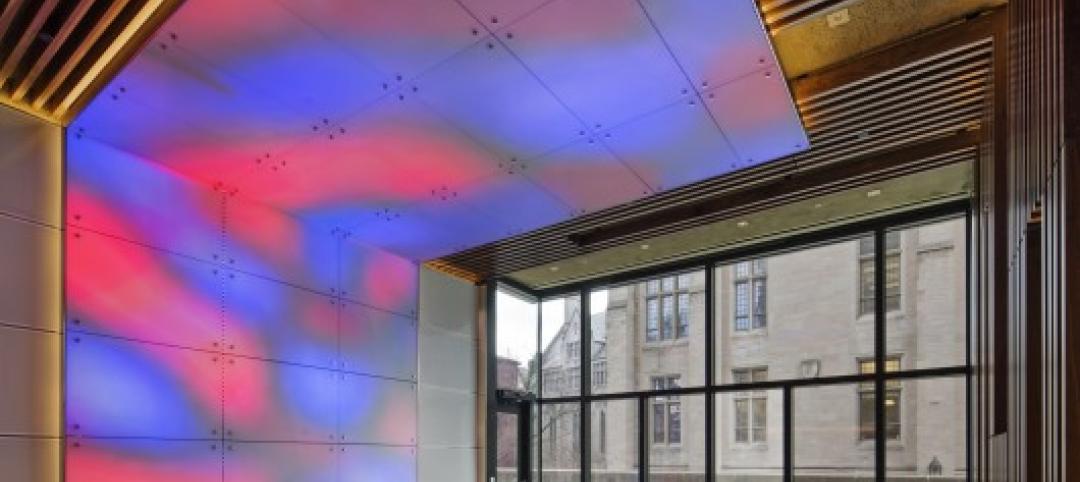On July 20, the University of Michigan in Ann Arbor opened Mcity, a 32-acre simulated urban and suburban controlled environment, designed specifically to test the potential of connected and automated vehicle technologies.
The $6.5 million project comprises a five-mile stretch of roads, some of them up to five lanes. Mcity includes rearrangeable architecture such as buildings, streetlights, parked cars, traffic lights and stop signs, sidewalks, and other obstacles. Robotic pedestrians and mechanized bikes roam throughout Mcity.
The miniature city is developed and designed by the university’s two-year-old Interdisciplinary Mobility Transformation Center, a partnership of several automotive companies, the Michigan Department of Transportation, researchers from UM’s Transportation Research Institute, and its College of Engineering.
“The initiative demonstrates the great potential in working with partners outside the University to address compelling issues of broad impact,” said UM’s president Mark Schlissel. NPR reports that 15 companies, which include Ford, GM, and Nissan, paid $1 million each to help build Mcity.
Companies like Google, Toyota, Uber, and Apple have been working on self-driving technologies that rely on GPS, radar and remote sensors known as LIDAR. So far the test results have been impressive, albeit in a limited sense. Experts anticipate that driverless streets and highways could be a common reality within the next 10 to 15 years. The real challenge, though, is getting driverless cars to react to and interact with how humans drive.
Google, which began its self-driving project in 2009, currently averages 10,000 autonomous miles per week on public streets. Over six years of testing through May 2015, its driverless vehicles had been involved in 12 minor accidents during more than 1.8 million miles of autonomous and manual driving combined. “Not once was the self-driving car the cause of the accident,” claims Google in a recent progress report. However, Google’s test cars rarely go beyond 25 miles per hour and so far have been limited to roads the car’s computers have already analyzed.
As the New York Times reported earlier this month, autonomous vehicles right now are programmed to drive overly cautiously, compared with humans’ typically aggressive driving habits. Autonomous cars “have to learn to be aggressive in the right amount, and the right amount depends on the culture,” Donald Norman, director of the Design Lab and the University of California, San Diego was quoted as saying.
Mcity, then, provides a testing ground for driverless cars in unpredictable conditions.
“There are many challenges ahead as automated vehicles are increasingly deployed on real roadways,” explains Peter Sweatman, director of the U-M Mobility Transformation Center. “Mcity is a safe, controlled and realistic environment where we are going to figure out how the incredible potential of connected and automated vehicles can be realized quickly, efficiently and safely.”
NPR quotes university researchers who are hoping to have 20 to 30 automated cars driving around Ann Arbor’s streets within the next six years.
Related Stories
| Jun 16, 2014
6 U.S. cities at the forefront of innovation districts
A new Brookings Institution study records the emergence of “competitive places that are also cool spaces.”
| Jun 12, 2014
Zaha Hadid's 'gravity defying' Issam Fares Institute opens in Beirut
The design builds upon the institute’s mission as a catalyst and connector between AUB, researchers and the global community.
| Jun 12, 2014
Tod Williams Billie Tsien Architects' design selected for new UCSC facility
The planned site is a natural landscape among redwood trees with views over Monterey Bay, a site that the architects have called “one of the most beautiful they have ever worked on.”
| Jun 12, 2014
Austrian university develops 'inflatable' concrete dome method
Constructing a concrete dome is a costly process, but this may change soon. A team from the Vienna University of Technology has developed a method that allows concrete domes to form with the use of air and steel cables instead of expensive, timber supporting structures.
| Jun 11, 2014
David Adjaye’s housing project in Sugar Hill nears completion
A new development in New York's historic Sugar Hill district nears completion, designed to be an icon for the neighborhood's rich history.
| Jun 9, 2014
6 design strategies for integrating living and learning on campus
Higher education is rapidly evolving. As we use planning and design to help our clients navigate major shifts in culture, technology, and funding, it is essential to focus on strategies that help foster an education that is relevant after graduation. One way to promote relevance is to strengthen the bond between academic disciplines and the campus residential life experience.
| Jun 9, 2014
Green Building Initiative launches Green Globes for Sustainable Interiors program
The new program focuses exclusively on the sustainable design and construction of interior spaces in nonresidential buildings and can be pursued by both building owners and individual lessees of commercial spaces.
| Jun 9, 2014
10 projects named 2014 AIA Small Project Award winners
Yale's funky new Ground café and a pavilion made from 53,780 recycled plastic bottles are among the nation's best new small projects.
| May 29, 2014
7 cost-effective ways to make U.S. infrastructure more resilient
Moving critical elements to higher ground and designing for longer lifespans are just some of the ways cities and governments can make infrastructure more resilient to natural disasters and climate change, writes Richard Cavallaro, President of Skanska USA Civil.
Sponsored | | May 27, 2014
Grim Hall opens the door to fire safety with fire-rated ceramic glass
For the renovation of Lincoln University’s Grim Hall life sciences building into a state-of-the-art computer facility, Tevebaugh Associates worked to provide students and faculty with improved life safety protection. Updating the 1925-era facility's fire-rated doors was an important component of the project.















